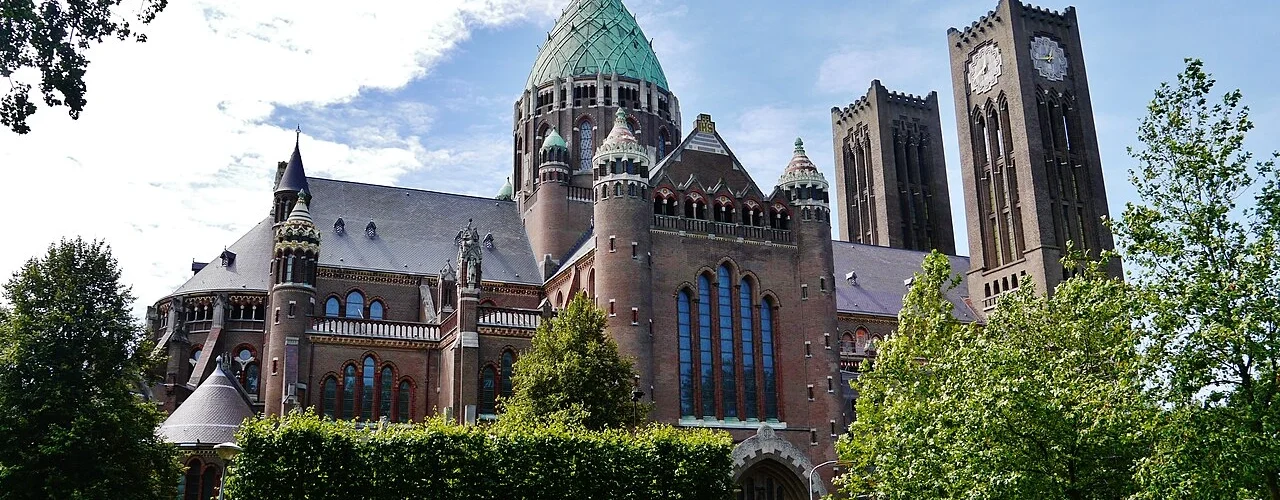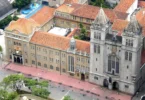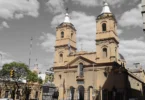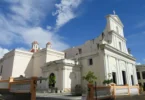Introduction
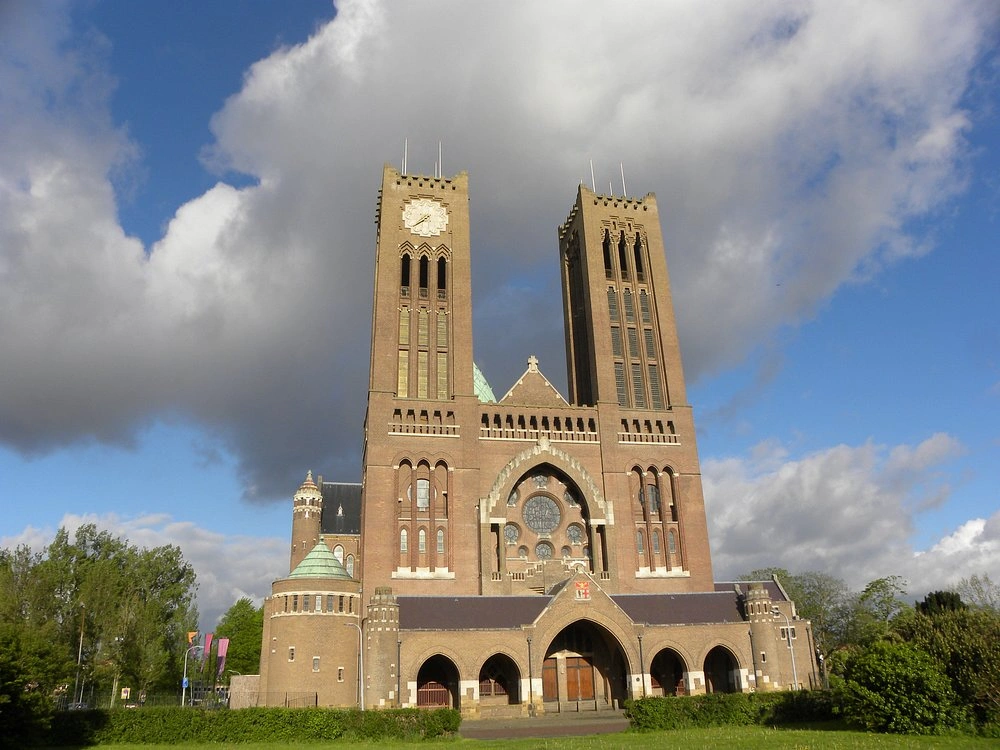
The Cathedral Basilica of Saint Bavo, also known since 2019 as the KoepelKathedraal Haarlem, is a monumental Roman Catholic cathedral located in the Houtvaartkwartier district of Haarlem, the Netherlands. Serving as the seat of the Roman Catholic Diocese of Haarlem-Amsterdam, the cathedral stands as a prominent symbol of Catholic revival in the Netherlands at the turn of the 20th century. It is the second-largest Roman Catholic church in the country, surpassed only by Saint John’s Cathedral in ’s-Hertogenbosch. Construction of the cathedral began in 1895 under the direction of architect Joseph Cuypers, the son of the renowned architect Pierre Cuypers. Commissioned by Bishop Caspar Bottemanne, the church was intended to replace the former waterstaatskerk of St. Joseph in the Jansstraat, which itself had been built to serve the Catholic community after the Grote or Sint-Bavokerk—Haarlem’s medieval cathedral—was converted to Protestantism in 1578 during the Reformation. The new cathedral was completed in 1930, representing decades of meticulous planning and construction.
The architectural style of the Cathedral Basilica of Saint Bavo is a unique blend of eclecticism and neo-Romanesque, with additional influences from neo-Gothic and Byzantine styles, resulting in a richly decorated and visually striking structure. The building’s grand dome (or koepel) has become a defining feature of Haarlem’s skyline, giving rise to the church’s contemporary name, KoepelKathedraal (Dome Cathedral). Dedicated to Saint Bavo, the patron saint of Haarlem, whose cult originally developed in Ghent—a city with which Haarlem maintained historic trade ties—the cathedral honors a deep-rooted spiritual and cultural tradition. On 2 May 1948, Pope Pius XII elevated the church to the rank of minor basilica, in recognition of its importance in the Dutch Catholic community.
Within the cathedral complex, the former sacristy has been transformed into a museum known as the Schatkamer (treasury), which houses a collection of religious artifacts and artworks that reflect the long and often turbulent history of Catholicism in Haarlem. Today, the KoepelKathedraal functions not only as an active center of Catholic worship but also as a vibrant cultural venue. Managed by the Stichting Kathedrale Basiliek Sint Bavo (Saint Bavo Cathedral Basilica Foundation), the cathedral hosts a range of events, exhibitions, and concerts, aiming to preserve its spiritual legacy while also serving the wider community.
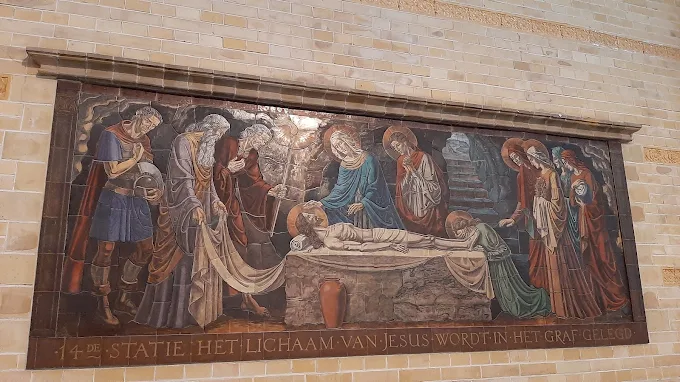
Origins and Need for a New Cathedral
The history of the Cathedral Basilica of Saint Bavo in Haarlem begins with the Church of St. Joseph, which was designated as the city’s cathedral in 1853. However, the church soon proved too small to meet the growing needs of the Catholic community. In response, Bishop Gaspard Bottemanne initiated plans for a new and larger cathedral in 1893 that would serve both as a diocesan seat and as a parish church for the expanding city.
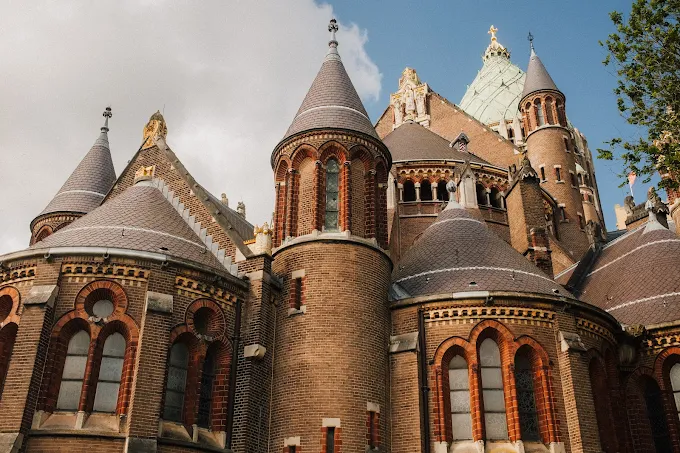
Architectural Vision and Design Evolution
Initially, the project was meant for Pierre Cuypers, famed for his neo-Gothic architecture. Though he may have provided initial input, the actual design was handed over to his son, Joseph (Jos) Cuypers, due to Pierre’s advancing age. Jos began with a neo-Gothic concept but gradually transitioned to a neo-Romanesque design, incorporating Byzantine, Jugendstil (Art Nouveau), and Islamic influences. The result was a unique architectural expression that deviated from traditional Dutch church architecture.
Construction Phases
Phase One (1895–1898): The Choir and Chapels
Construction began in 1895, starting with the eastern section of the cathedral: the choir and radiating chapels. This portion featured a semi-circular apse, dwarf gallery, and rounded chapels, hallmark features of neo-Romanesque design. The cathedral was officially consecrated on April 1, 1898.
Phase Two (1902–1906): Transept and Nave
Between 1902 and 1906, the transept and nave were constructed, giving the cathedral its cross-domed basilica form. Architectural elements in this phase drew inspiration from Islamic styles seen in southern Spain, while the crossing tower and north portal reflected Jos Cuypers’ interest in Indian architecture. The nave retained some neo-Gothic elements but was distinct due to its yellow brickwork and experimental design. Architect Jan Stuyt assisted during this period, although his specific contributions remain unclear.
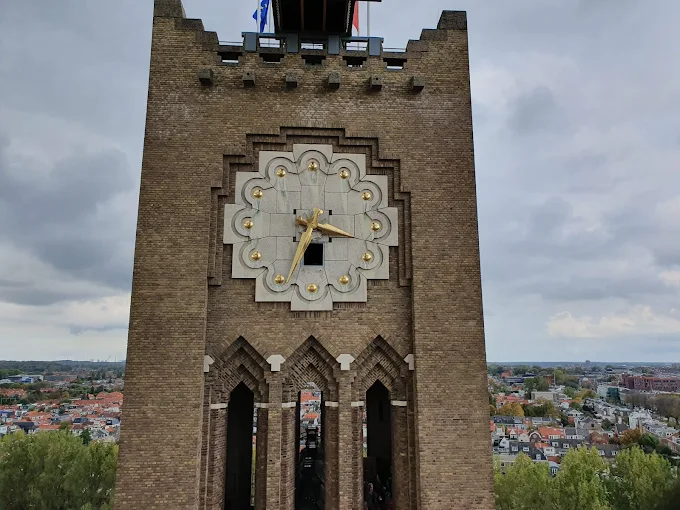
Phase Three (1927–1930): Towers and Porch
Due to financial limitations, the towers and main porch were postponed until 1927. By this stage, Jos Cuypers collaborated with his son Pierre Cuypers Jr., who had been influenced by Dom Bellot and architectural expressionism. The towers were built but never fully crowned, despite several proposals. The porch, completed in 1930, is a synthesis of neo-Gothic and neo-Romanesque elements and was likely the work of Jos Cuypers.
Architecture of Cathedral Basilica of Saint Bavo, Haarlem, Netherlands
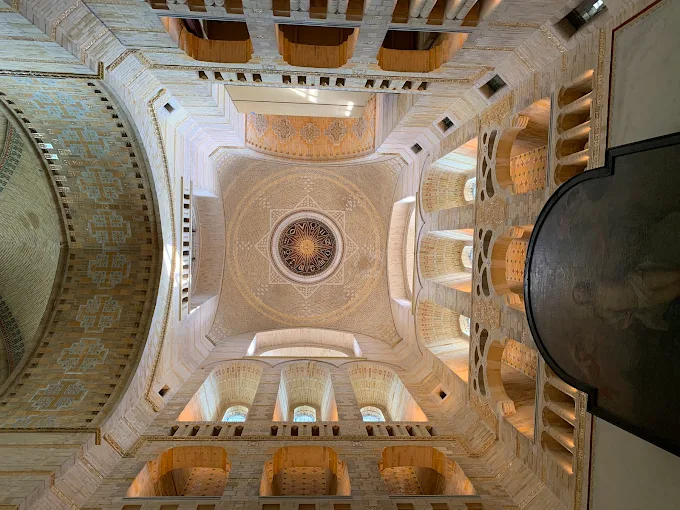
Architect : Joseph Cuypers
Architectural styles : Neo-Baroque architecture, Neo-Renaissance architecture
Exterior
The cathedral’s exterior is a fusion of neo-Romanesque structure with decorative influences from Byzantine, Jugendstil, and Islamic architecture. The bold use of yellow brick, richly sculpted towers, and mythical creatures—designed by Jos Cuypers to symbolize the battle between good and evil—gives the building a distinct identity. These sculptures also appear in miniature form in the cathedral’s crypt.
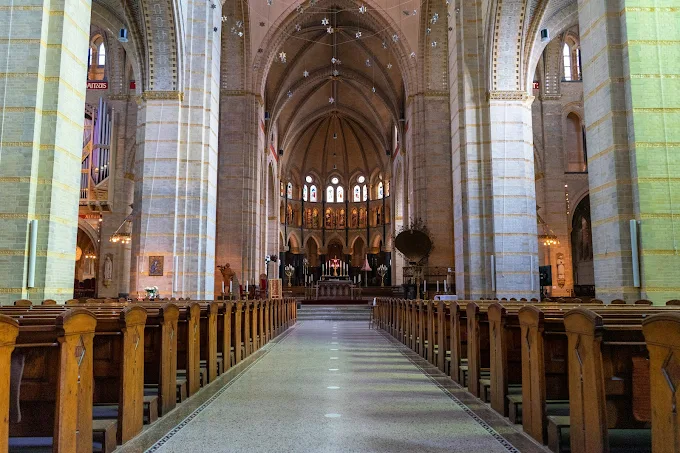
Interior
Inside, the cathedral opens into a lofty, cross-shaped space under a central dome. The choir and chapels radiate from the apse in Romanesque fashion. Light filters through stunning stained glass windows, some of which depict the coat of arms of Bishop Bottemanne and scenes from the life of Saint Bavo. Richly decorated pillars, mosaics, and ceiling frescoes enhance the spiritual atmosphere, blending tradition with artistic innovation.
Cultural and Religious Significance
Haarlem has been a center of Christianity since the 9th century, when a wooden church was built on the current site of the Grote Kerk. In 1559, that church was elevated to a cathedral. However, following the Siege of Haarlem and the Protestant Reformation, it was confiscated and converted to a Protestant church. Many Catholic artworks were taken or destroyed, with survivors now housed in the Frans Hals Museum. For centuries afterward, Catholics worshipped in secret mission stations (staties). Among these, the St. Josephs statie eventually led to the construction of the Waterstaatskerk on the Jansstraat in 1853, which became Haarlem’s main Catholic church until the completion of the new cathedral.
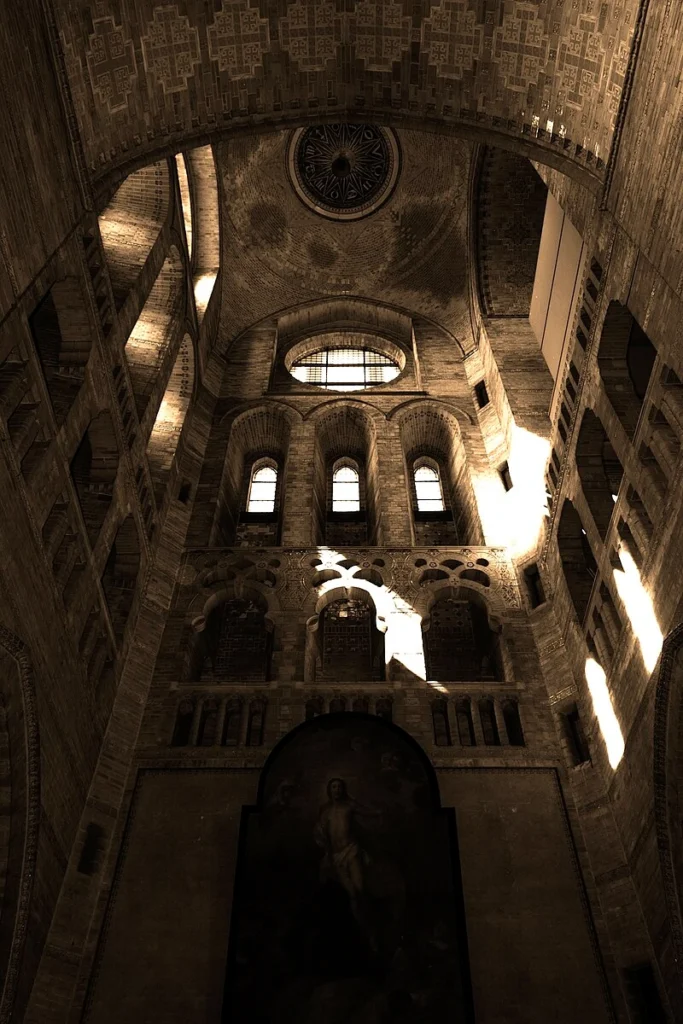
Church Treasure and Ecclesiastical Heritage
The sacristy of Saint Bavo Cathedral houses a significant collection of church treasures, spanning liturgical vessels and church silver from the 15th to the 20th centuries. Among these are chalices, patens, and other sacred items reflecting centuries of Catholic worship in Haarlem. Particularly notable are the early 16th-century ecclesiastical vestments, many of which originated from a former Haarlem beguinage—a religious community of laywomen. These garments provide invaluable insight into the craftsmanship and cultural expressions of historical Catholicism. In a tragic event on July 12, 2013, six antique ornaments were stolen from the church, and the building sustained serious damage during the theft. This incident underscored the vulnerability of historical religious sites and the need for continued preservation efforts.
The Organ Collection
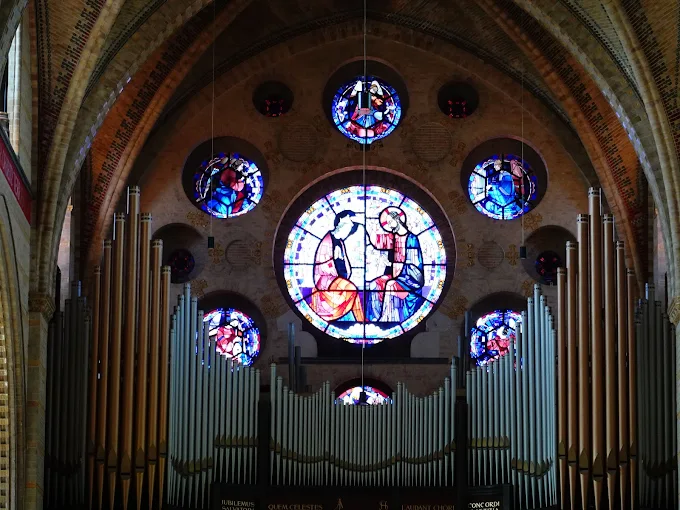
Saint Bavo Cathedral is also home to an outstanding collection of three pipe organs, which play a central role in the cathedral’s liturgical and musical life.
Willibrord Organ
The Willibrord Organ, the largest and most prominent, was constructed between 1921 and 1923 by the Adema organ company for the Sint-Willibrorduskerk in Amsterdam. After that church was demolished, the organ was moved to Saint Bavo in 1971. It features 80 registers, four manuals, and an independent pedal system, producing a majestic sound that fills the vast cathedral.
Transept Organ
Built in 1907, also by Adema, the Transept Organ is a three-manual instrument located in the cathedral’s transept. It complements the Willibrord Organ and is used during regular services and special performances.
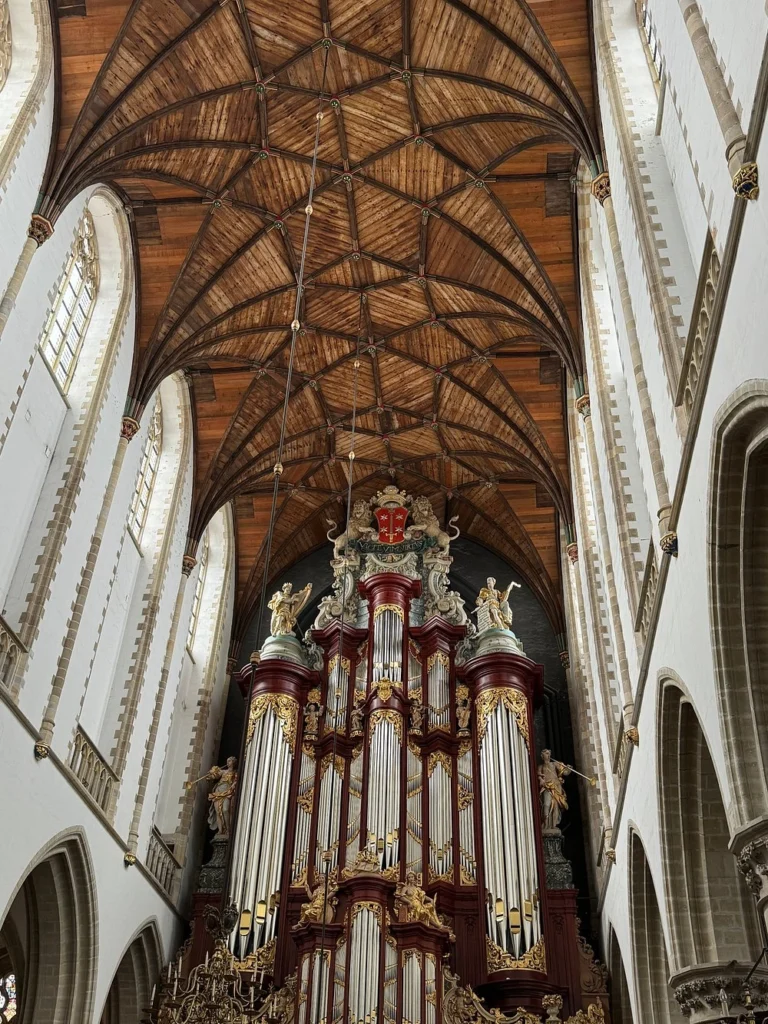
Choir Organ
The smallest but historically significant, the Choir Organ is a cabinet organ dating from around 1800. It is primarily used for choral performances and offers a more intimate musical experience. Together, these organs embody the rich musical heritage of the cathedral and contribute to its standing as both a religious and cultural landmark.
Restoration and Recognition
In 2004, a comprehensive restoration project was launched, led by Van Hoogevest Architects, to ensure the preservation and structural integrity of the cathedral. The efforts were widely acclaimed and, in October 2019, the project received the European Heritage Award. A commemorative plaque was unveiled on October 11, 2019, by Minister Ingrid van Engelshoven and Mayor Jos Wienen.
Feast Day
Feast Day : 01 October
The feast day of Saint Bavo, the patron saint of the Cathedral Basilica of Saint Bavo in Haarlem, is celebrated on October 1. This date commemorates his death and honors his life as a nobleman who converted to Christianity and became a monk. The cathedral, which bears his name, holds special services on this day, and it remains an important site of devotion, especially during the annual celebration.
Church Mass Timing
Monday, Friday : 09:00 AM
Tuesday to Saturday : 7:00 PM
Sunday : 10:00 AM
Church Opening Time:
Monday to Saturday : 10:00 am – 5:00 pm
Sunday : Closed
Contact Info
Address : Cathedral Basilica of Saint Bavo
Leidsevaart 146, 2014 HE Haarlem, Netherlands
Phone : +31 23 532 3077
Accommodations
Connectivities
Airway
Cathedral Basilica of Saint Bavo, Haarlem, Netherlands, to Amsterdam Airport Schiphol (AMS), distance between 19 min (17.5 km) via A9.
Railway
Cathedral Basilica of Saint Bavo, Haarlem, Netherlands, to Halfweg-Zwanenburg 1165 MT Halfweg, distance between 12 min (8.3 km) via A200 and N200.

